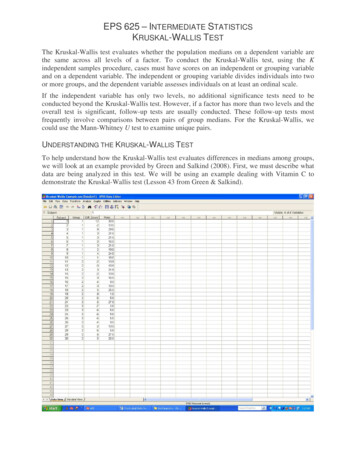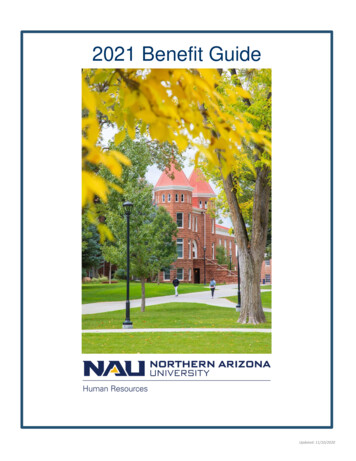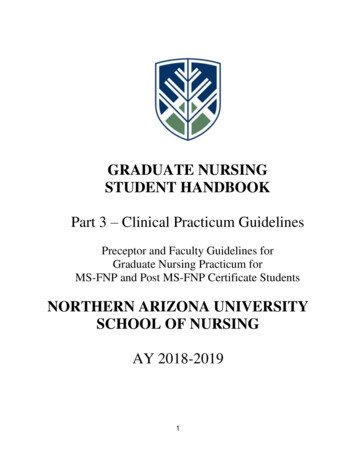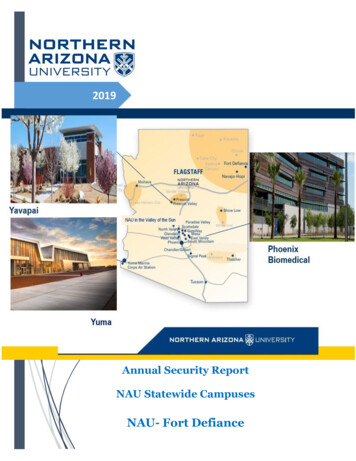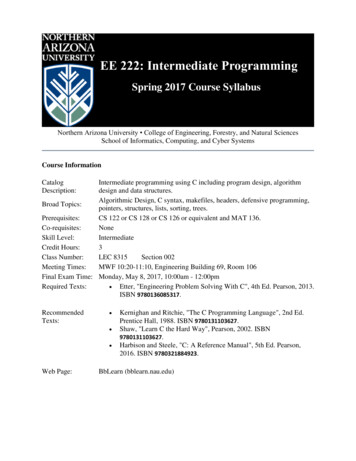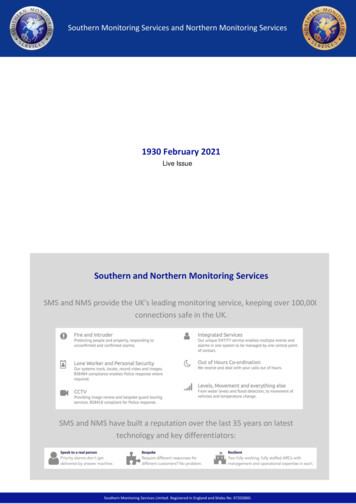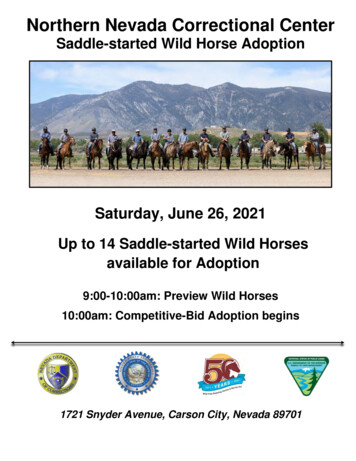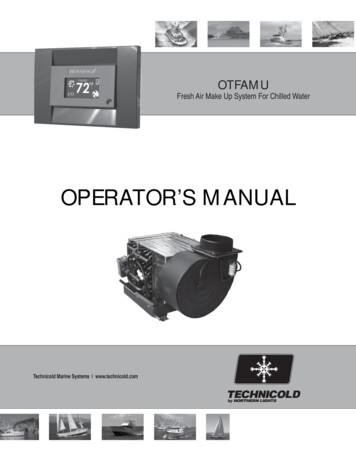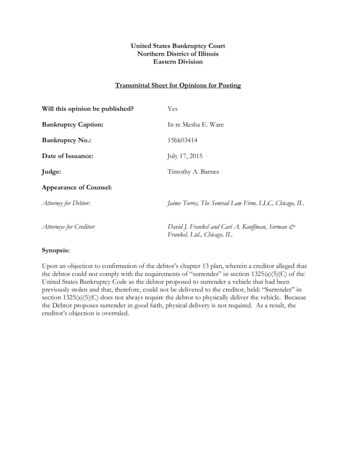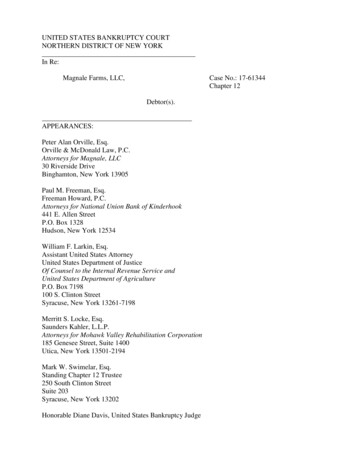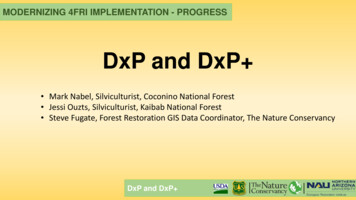
Transcription
MODERNIZING 4FRI IMPLEMENTATION - PROGRESSDxP and DxP Mark Nabel, Silviculturist, Coconino National Forest Jessi Ouzts, Silviculturist, Kaibab National Forest Steve Fugate, Forest Restoration GIS Data Coordinator, The Nature ConservancyDxP and DxP
MODERNIZING 4FRI IMPLEMENTATION - PROGRESSWhat does this work respond to? Present day forest conditions ofdensely growing, smaller treeshas led to increased wildfireactivity, decreased water yield,reduced biodiversity, degradedecosystem services, and loss ofhabitat.DxP and DxP
MODERNIZING 4FRI IMPLEMENTATION - PROGRESSWhat does this work respond to? There has been an alarming increase in the sizeand severity of wildfire since 1985 The average size of wildfires have quadrupled The number of acres burned annually in United Stateshas increased from 3 million to 10 million The annual suppression costs have increased from 240 million to 3.1 billionDxP and DxP
MODERNIZING 4FRI IMPLEMENTATION - PROGRESSWhat does this work respond to? There is a need for wildfire mitigationthrough landscape forest restoration usingmechanical thinning and prescribed fire Prep 50K acres/year to stimulate investment bythe timber industryDxP and DxP
MODERNIZING 4FRI IMPLEMENTATION - PROGRESSWhat was done? Investment to increase the scope and scale of forest thinning byreducing costs associated with timber sale prep tasks Implement timber sales using DxP instead of ITM Concerns expressed by stakeholders Will desired conditions be met without paint?Will DxP decrease operator productivity?How to assess outcomes, compliance, and accountability?Will cost savings in sale prep result in additional costs elsewhere?DxP and DxP
MODERNIZING 4FRI IMPLEMENTATION - PROGRESSWhat was done? TNC offered a DigitalRestoration Guide(DRG) as a solutionand DxP (DxPaccompanied byDigital PrescriptionGuide) is born tobridge the gapbetween ITM and DxPDxP and DxP
MODERNIZING 4FRI IMPLEMENTATION - PROGRESSTimeline 2012 – TNC works with USFS to layout meadow restoration boundary on USFS land adjacent toHPP and learns of the high cost of paint and the desire to use more DxP on future projectsinstead of ITM TNC begins developing a Digital Restoration Guide (DRG) and works with USFS to cultivatethe idea a digital guide to accompany DxP 2013 – TNC installs TimberGuide in-cab mapping solutions with HDI and Perkins TimberHarvesting to test and implement DxP DxP and DxP
MODERNIZING 4FRI IMPLEMENTATION - PROGRESSTimeline 2014 – TNC, 4FRI team, and Flagstaff RD develop early DxP data models and collectdata using ESRI Arc Collector 2015 – TNC and Flagstaff RD implement DxP at Clarks and Bob’s 2016 – TNC uploads map packages onto TimberNavi in-cab mapping solution for Perkins TimberHarvesting Flagstaff RD commits to 10K acres of DxP with a TEAMS crew at Chimney Springs, Johnny’s,Pinegrove, and Marshall timber sales City of Flagstaff uses DxP concepts to harvest on Observatory Mesa DxP units harvested on Bob’s TNC signs a challenge cost-share SPA with the Kaibab National ForestDxP and DxP
MODERNIZING 4FRI IMPLEMENTATION - PROGRESSTimeline 2017 – Coconino County uses DxP concepts to treat Fort Tuthill First 4FRI NEPA DxP units are treated at Chimney Springs Fort Valley by TNC, FlagstaffRD, Campbell Global, and HDI Forestry TNC/Kaibab NF begin work under the 2016 challenge cost-share agreement to create DxP polygons on 3589 acres (Clover, Junction, & Moonset) Coconino creates DxP polygons on 5,000 acres (Willard, Newman, A-1) Apache Sitgreaves implements and mechanically harvests DxP in mixed conifer 2018 – TNC/Kaibab NF challenge cost-share “Prep SPA” initiates DxP at Parks West andSitgreaves West. Small scale use of Heads-Up Digitizing. In-cab technology and DxP used during harvest operations at Fort Tuthill DxP operations continue at Chimney Springs by Suarez Forestry Coconino creates DxP polygons on 5,000 acres (Horse Park, Dutton Hill(s), LOPocket(s)); experiments with DxP / Leave Tree mark hybrid A-S implements DxP at Greens Peak and Burnt Mill.DxP and DxP
MODERNIZING 4FRI IMPLEMENTATION - PROGRESSTimeline 2019 – TNC/Kaibab cost share implements DxP at Parks West and Sitgreaves WestDxP operations wrapping up at Chimney SpringsDxP/DxP operations starting in Clark and A-1 SouthToday's presentationDxP and DxP
MODERNIZING 4FRI IMPLEMENTATION - PROGRESSWhat was the process? Use GTR-310 to define the landscapeforest restoration goals Restore the natural range of variability ofhistoric conditions in terms of tree groups,grassy interspace, and individual treesDxP and DxP
MODERNIZING 4FRI IMPLEMENTATION - PROGRESSWhat was the process? Emphasize spatial targets in the Rx cut card to facilitate DxP Examples:o Retain all yellow pine & old growth ( UDL), snags, logs and oaktreesoooooMeet overall basal area target of 70-90 ft2 BA/ac at the cut unit levelCreate groups of up to 1 acre averaging 0.1-0.5 ac in sizeCreate interspace 60'-80' wide and comprising 40-55% of cut unitCreate regeneration openings across 10% of cut unitStrive to achieve desired trees per acre based on stocking guidelinesDxP and DxP
MODERNIZING 4FRI IMPLEMENTATION - PROGRESSWhat was the process? Implement DxP Create DxP data models Collect and sync data using AGOL, Collector, and iOS/Android tablets Improve marking productivity compared to ITMDxP and DxP
MODERNIZING 4FRI IMPLEMENTATION - PROGRESSWhat was the process? Implement DxP Evaluate the quality of DxP digital product QA/QC, field validation, summary metrics, and basal area calculator Cross reference DxP summary metrics results with Rx targets in cut cards Approve DxP for harvest operationsDxP and DxP
MODERNIZING 4FRI IMPLEMENTATION - PROGRESSWhat was the process? Conduct harvest operations using DxP Improve operators’ spatial awareness Improve operators’ ability to achieve Rx targets fortree group size, % interspace, % regenerationopenings, and cut unit basal area Improve operator productivity compared to DxPDxP and DxP
MODERNIZING 4FRI IMPLEMENTATION - PROGRESSThe Formal StuffDxP and DxP
MODERNIZING 4FRI IMPLEMENTATION - PROGRESSDxP Simplicity Checklist DxP units should only be those whichmeet specific criteria Single-species, even-aged (BEST) Single-species, uneven-aged (Cautionneeded) Multiple-species, uneven-aged (Cautionneeded) Are results measurable? (MUST) Acceptance of Work must be developedand included as part of the ContractPackage (MUST)DxP and DxP
MODERNIZING 4FRI IMPLEMENTATION - PROGRESSThe Sale Admin Inspection ProcessDxP and DxP
MODERNIZING 4FRI IMPLEMENTATION - PROGRESSDxP Project ExamplesDxP and DxP
MODERNIZING 4FRI IMPLEMENTATION - PROGRESSKaibab NF –Clover SPA Targets: No 4FRI interspaces,group sizes, etc. Heavier emphasis onDM infection (City EIS) Results: Average group size oneacre Interspace 36% DM sanitation shading No cuts for YP’sDxP and DxP
MODERNIZING 4FRI IMPLEMENTATION - PROGRESSCoconino NF –Chimney Springs Total 1,626 acres Leave Tree Mark 228 ac DxP – Cutter Select 356 ac DxP (Tablet) 1,036 ac Targets: 50-90 ft2/acre BAGroups 0.1-1 acreInterspaces 25-100 feet wide10-20% of area inregeneration openingsDxP and DxP
MODERNIZING 4FRI IMPLEMENTATION - PROGRESSCoconino NF - Chimney Springs Lessons Learned: BA targets met under both DxP and DxP Spatial objectives more closely met with DxP than DxP Operator successful at following polygons(45 of 50 plots cut according to polygons in Unit 9) Dwarf mistletoe infection level effectively reduced with DxP (proportion of infected trees reduced by 6.8%) Proportion of “defect” trees was not reduced under DxP (proportion of infected trees increased by 3.6%)DxP and DxP
MODERNIZING 4FRI IMPLEMENTATION - PROGRESSCoconino NF - Chimney Springs Lessons applied to subsequent projects:Smooth out polygonsSet minimum polygon size (0.1 acres)Reduce # of group typesFormalize inspection process for checkingDxP Account for individual trees to be left DxP and DxP
MODERNIZING 4FRI IMPLEMENTATION - PROGRESSCibola NF – Puerco EA Similar polygon types Plus “Sanitize DM” No cuts used regularly forstream buffers No information in polygons BA targets will be met usingfield monitoring of residual BADxP and DxP
MODERNIZING 4FRI IMPLEMENTATION - PROGRESSA-S Greens Peak Mixed conifer prescription No interspace Wide range of polygon sizesDxP and DxP
MODERNIZING 4FRI IMPLEMENTATION - PROGRESSHeads up Digitizing – A New Approach to DxP Kaibab NF – Parks West (4FRI)Heads Up DigitizingDxP and DxP “Traditional DxP ”
MODERNIZING 4FRI IMPLEMENTATION - PROGRESSWhat worked well? We demonstrated successful outcomes resulting from a stewardshipagreement We implemented a GIS workflow using Arc Desktop, AGOL, and Arc Collectorto digitize aspects of timber sale prep We now have spatial information to support management decisions andimprove accountability We are refining a process that is repeatable and can be implemented at scale We are digitizing other timber prep tasks for a more integrated process Preliminary data suggests operational cost savings when compared with DxPand layout cost savings when compared with ITMDxP and DxP
MODERNIZING 4FRI IMPLEMENTATION - PROGRESSWhat worked well? We’ve had favorable outcomeswith DxP and positivefeedback from operatorsDxP and DxP
MODERNIZING 4FRI IMPLEMENTATION - PROGRESSKey points for implementation DxP is the exact same as straight DxP, plus a digital guide for operators toenhance harvest operations and improve on outcomes 4FRI’s spatial targets for tree groups and interspace make it a great candidatefor implementing DxP but it can also be used in mixed conifer Be aware of how the openness in interspace will affect the residual basalarea needed within treed groups to meet unit level targets Be aware of how regeneration openings contribute to overall opennessDxP and DxP
MODERNIZING 4FRI IMPLEMENTATION - PROGRESSRecommendations Consider remote sensing options for digitizing DxP tree groupfeatures Consider how to address special consideration areas such as dwarfmistletoe Consider how to account for the spatial error associated to GPSaccuracy Consider updates to the USFS policy handbook that give clear guidanceon going digital with timber sale prep tasks Consider standardizing data models to support automated processesDxP and DxP
MODERNIZING 4FRI IMPLEMENTATION - PROGRESSContact Info Mark Nabel –mark.nabel@usda.gov Steve Fugate –steve.fugate@tnc.org Jessi Ouzts –Jessica.ouzts@usda.govDxP and DxP
Nov 04, 2019 · Timeline 2014 – TNC, 4FRI team, and Flagstaff RD develop early DxP data models and collect data
